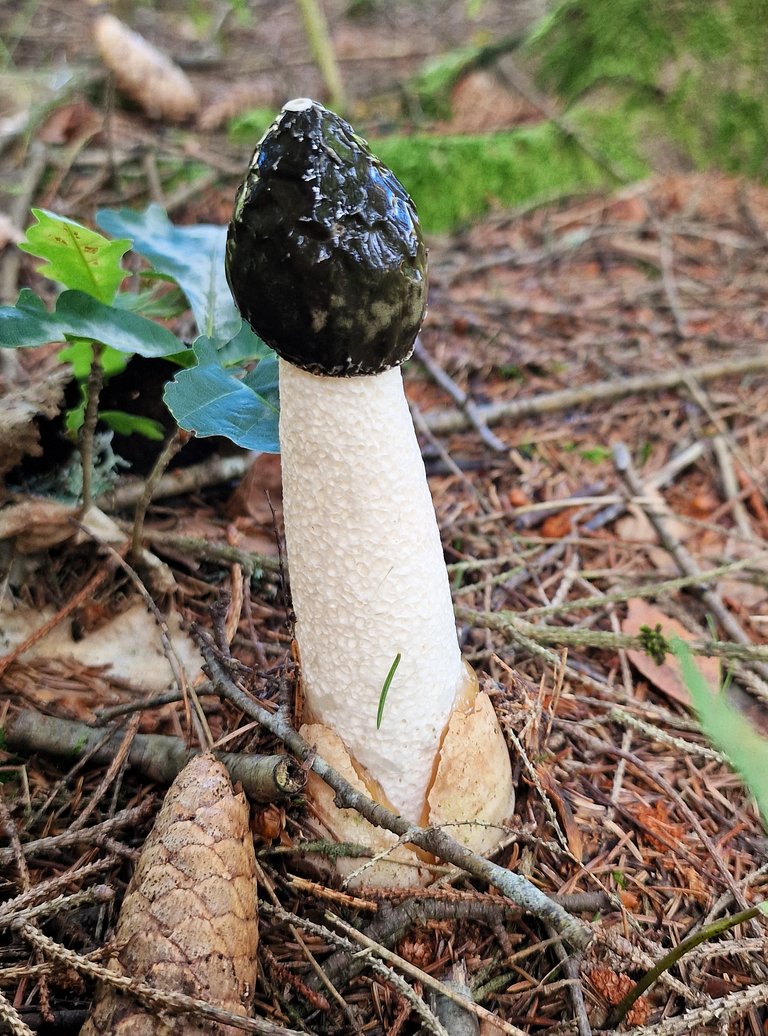
this is my contribution to #FungiFriday by @ewkaw
let's presume that all living things have consciousness, including fungi. it has been established that fungi are more like animals than plants but what does the possession of consciousness entail for fungi, such as this stinkhorn?
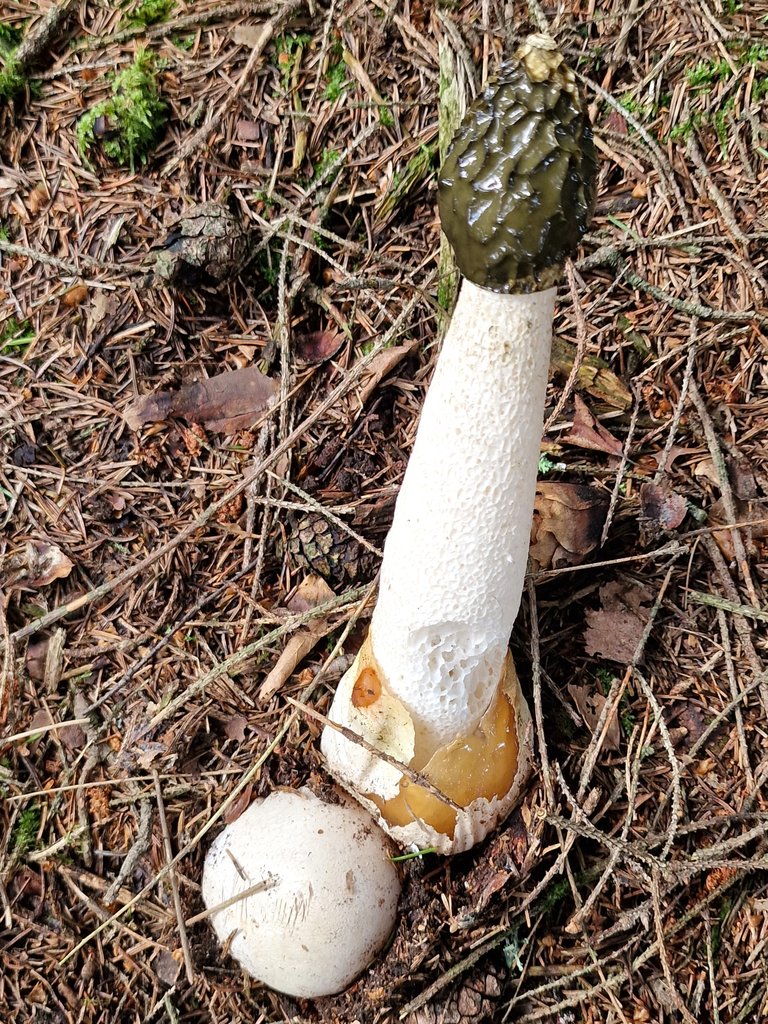
the fruiting body of Phallus impudicus is the reproductive organ of the species and the reproduction is sexual. but still, until I find a specimen with two balls instead of one I am going to assume that the fungi have no knowledge of the role of a phallus in mammalian reproduction.
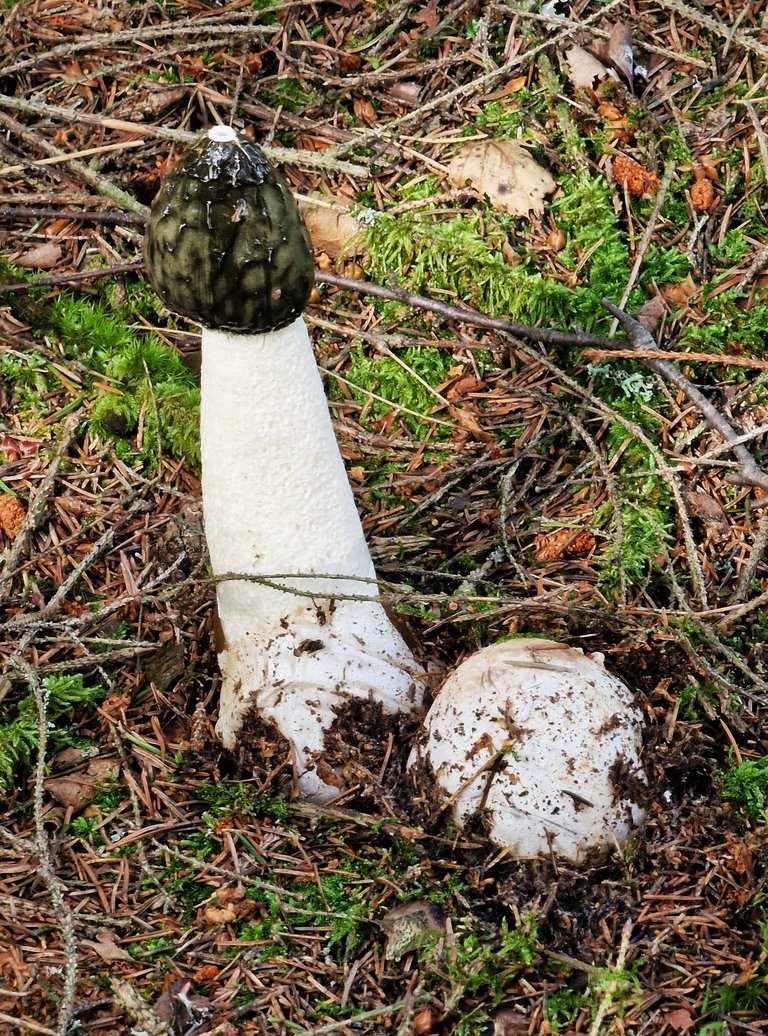
so let's have a good laugh, call the unmistakeable and funny resemblence a coincidence and move on. the phenomenon of consciousness is woefully underexplored by science. perhaps this is so because there is no widely accepted or even plausible theory of it's origin. since there is no evidence of the evolution of conciousness perhaps scientists are concerned that maybe it did not evolve at all. if so that would basically mean they have got pretty much everything wrong!
but let's get back down to earth and thrust deeper into what's Up with this fun guy.
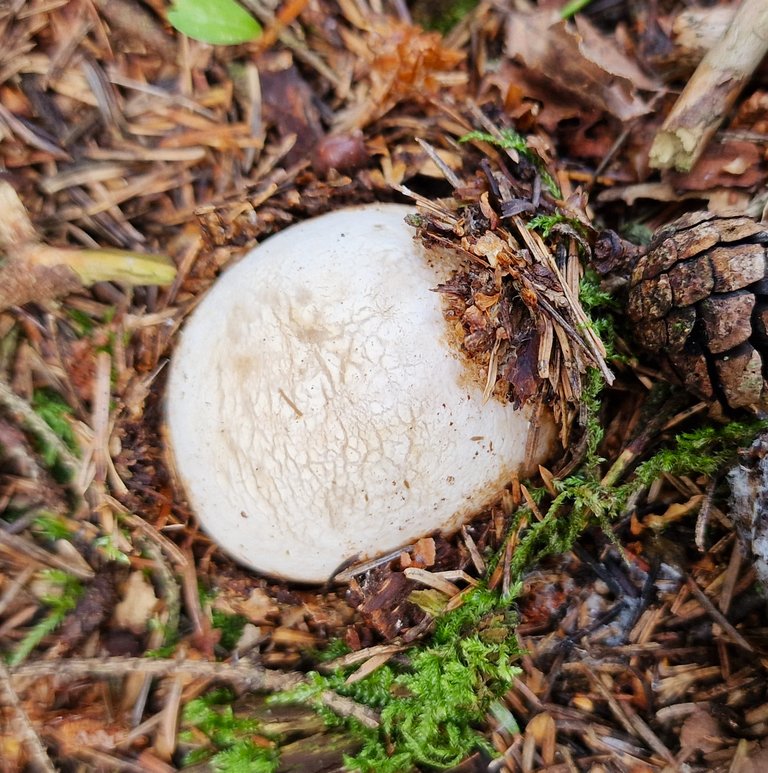
it starts off in what is known as a witch's egg

when things inside begin to swell the egg cracks open
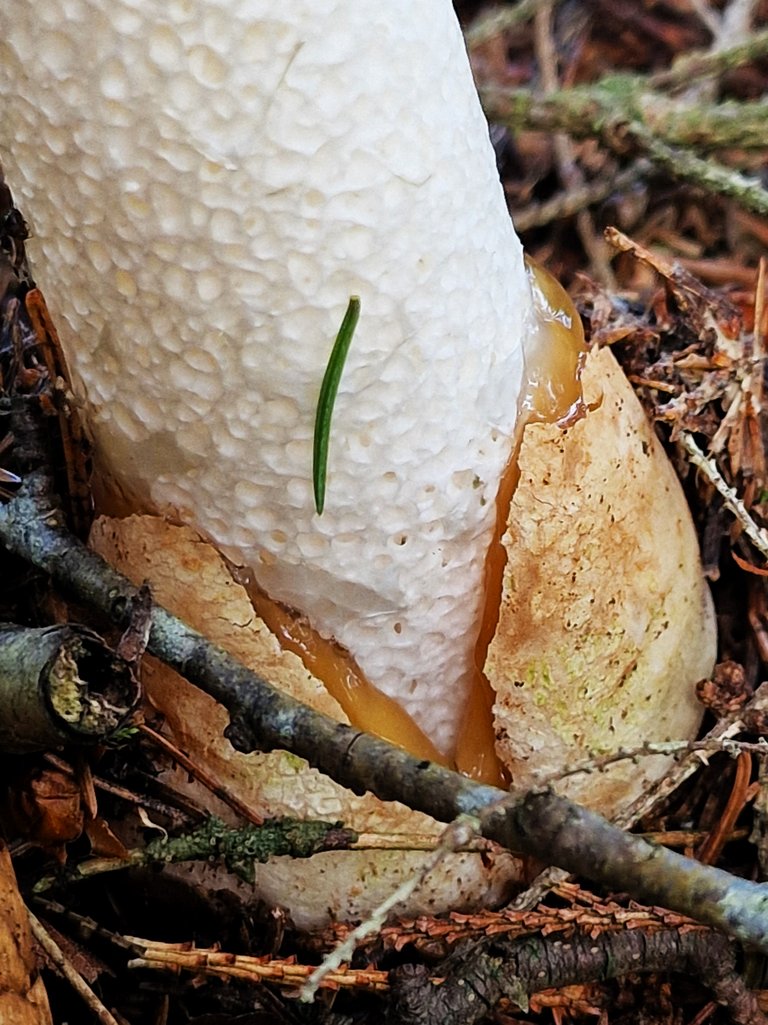
then the shaft soon emerges from the volva (codespeak for vulva). here the fungi get it all backwards, clearly revealing their lack of intimate knowledge of what goes on with normal folks like us.
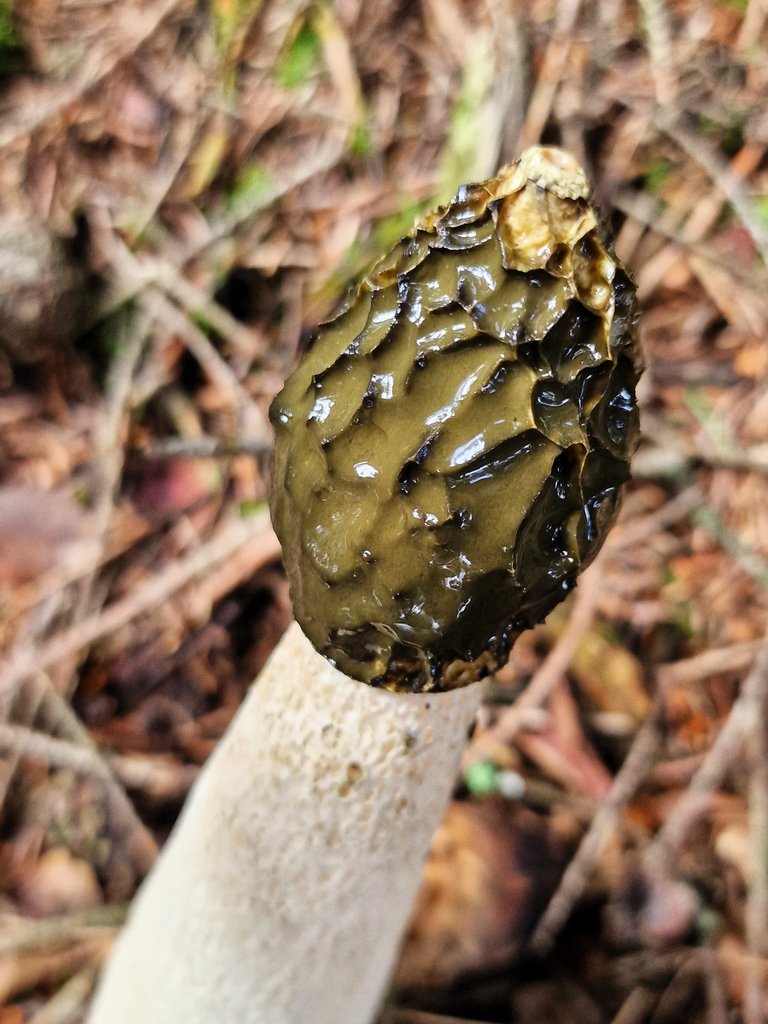
within a day or two the erection stands tall for all to behold and smell. the head is covered in a greenish black slime or sticky gel, technically known as gleba. that's where the spores of the fungi are.
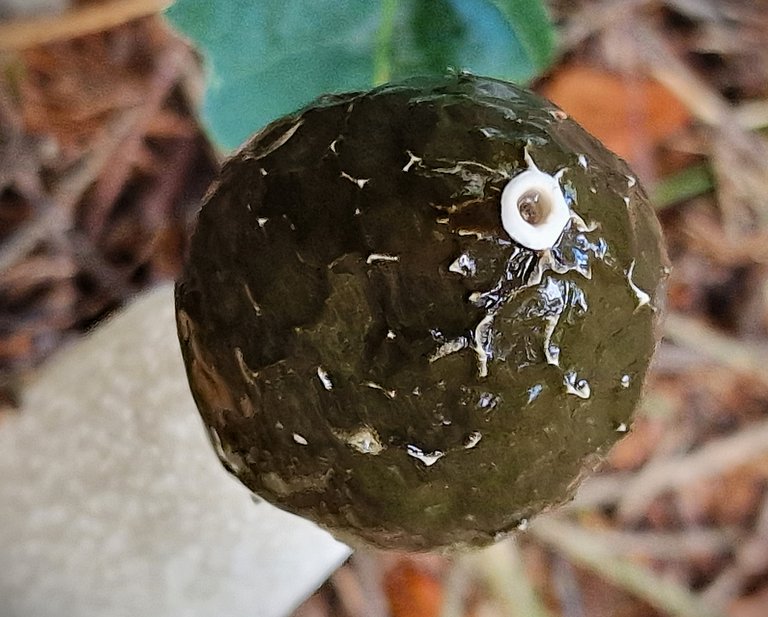
nothing comes out of that hole at the tip. i don't have a clue as to why it's there but the gleba stinks, and the bad smell attracts insects.

the insects eat the gleba
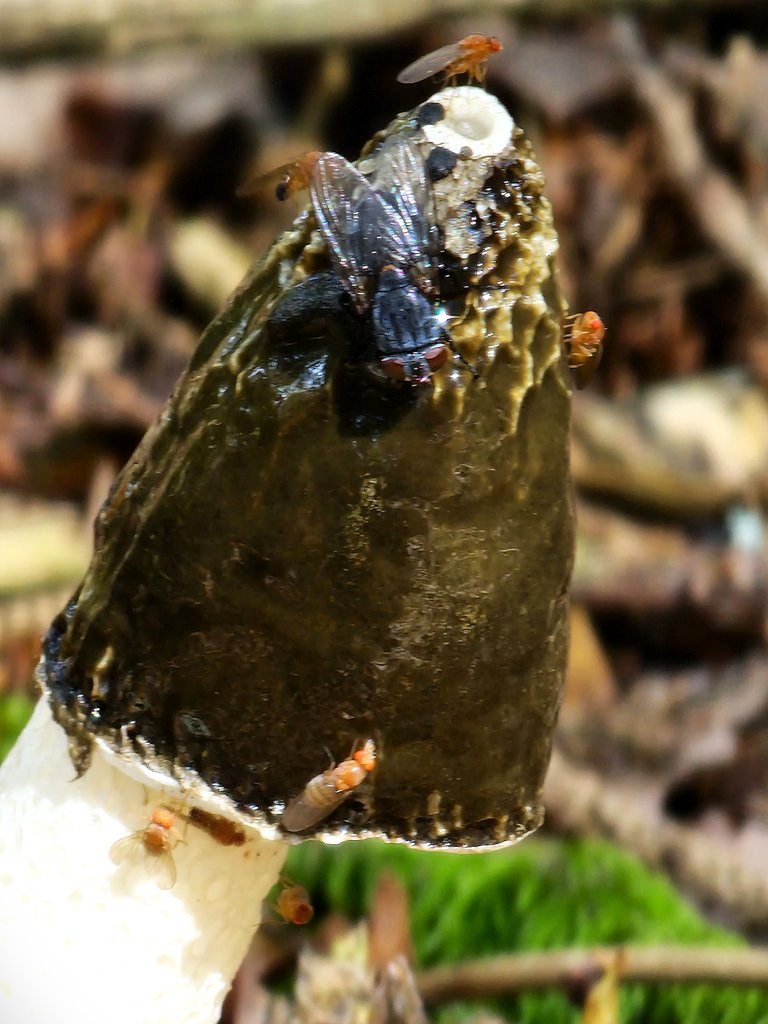 then fly away with the spores.
then fly away with the spores.
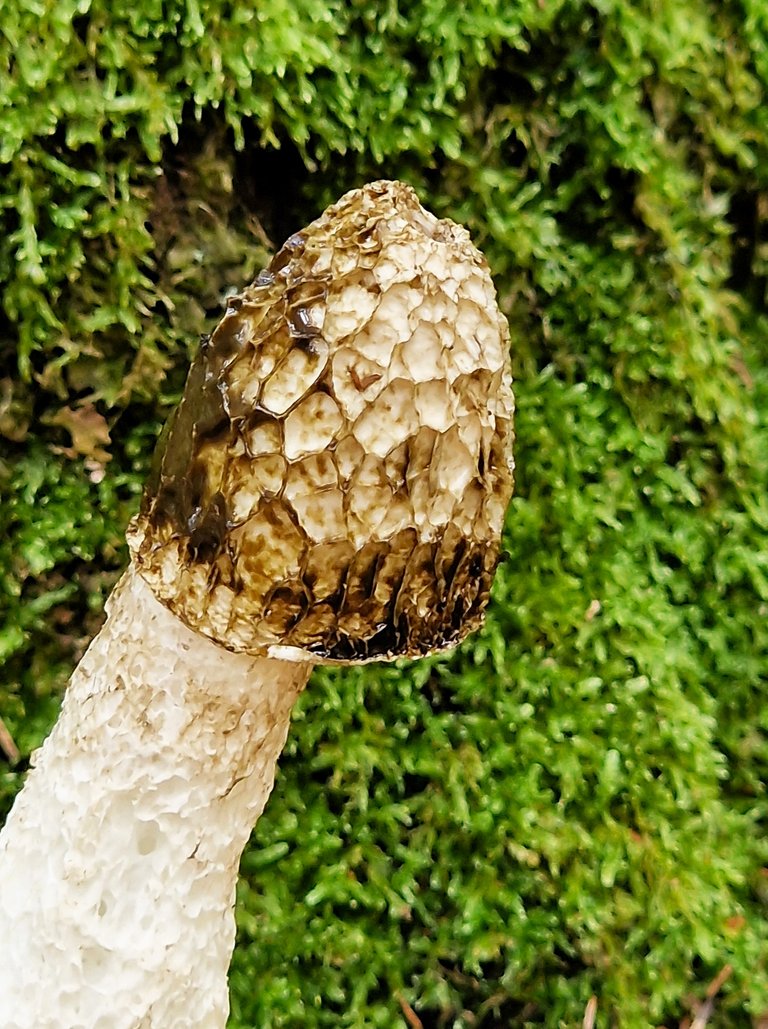
when the gleba is gone the reprodutive act is complete. with spores spread far and wide the phallus softens and withers.
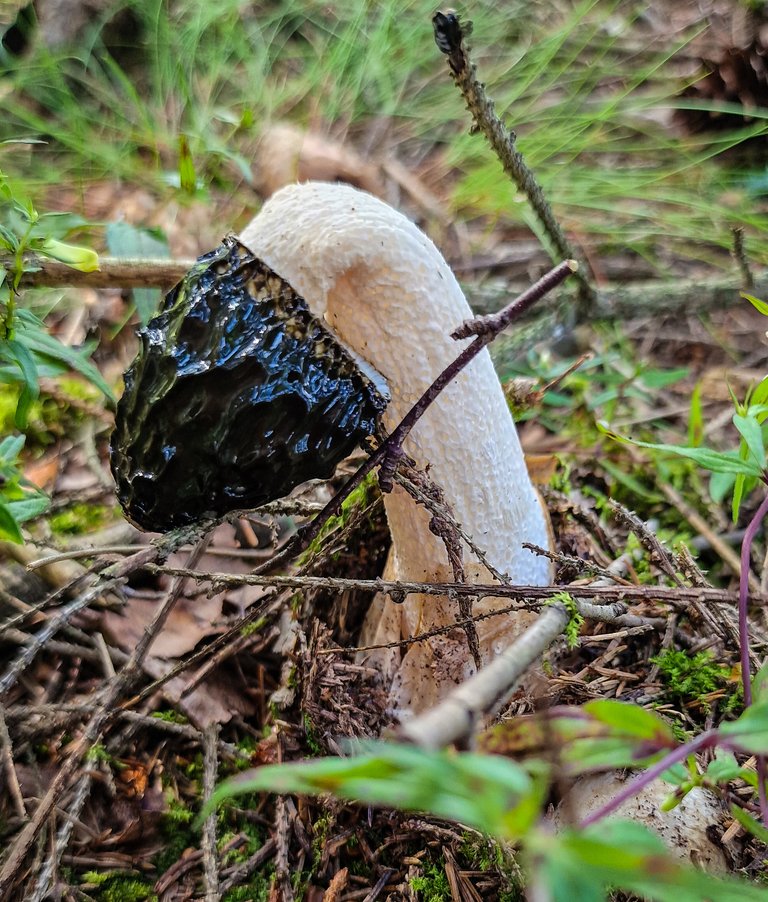
of course as with other species, erectile dysfunction does occasionally occur but fortunately for the fungi this does not result in impotence as long as the gleba is accessible to insects
this brilliant survival strategy is quite unique to the Phallaceae family. but how did it come into existence?
what do the fungi know ?
do they have a sense of smell?
they produce aromatic substances but do they know what aroma is?
are they consciously attracting insects through their aroma in order to spread their spores?
do they know insects fly far away, stopping many places?
do they feel pleasure when they are being eaten??
how do they know
the principle of evolution by survival of the fittest can explain the fine tuning of this phenomenon. the fungi producing the 'best' scent attracts the most insects. the fungi that emerge during the time of year with the most and best suited insects reproduce the most etc
but where is the evidence of the evolution of the strategy? there's more to this lowly stinkhorn than meets the eye. and nose.
i took all these photos with my S22 phone on various walks in local forests in 2024. all the photos are my property.
 Follow
Follow 

